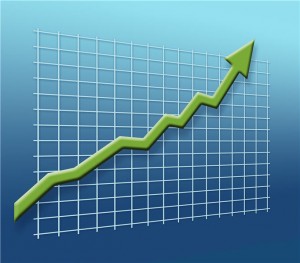25 Apr IS INFLATION BACK?
Should we be concerned? Should the Fed respond?
Prices are rising. In February, the Consumer Price Index advanced 0.5%. That follows increases of 0.4% in December and January. This doesn’t exactly represent runaway inflation –to give you some perspective, the CPI rose by almost 1.1% per month across 1979 – but it may be cause for concern.1,2
Producer prices have also jumped. The government’s Producer Price Index climbed 1.6% in February on the heels of a 0.8% increase in January and a 0.9% boost in December.3
Should core inflation reassure us? Some observers aren’t worried. They urge us to look away from the “headline” inflation and focus on the core numbers that factor out often-volatile food and energy costs. Core CPI was just 0.2% last month, as was core PPI.1,3
Those are nice low numbers, but other numbers within the indexes aren’t very comforting. Prices for finished consumer foods went up 3.9% in February – the biggest monthly gain in that category since 1974. The CPI’s index of fresh vegetable prices rose 6.7% in February. Natural gas prices rose 7.6% last month. Overall prices of crude energy materials have increased 17.8% since November. At the supermarket, you may have noticed that a gallon of milk costs nearly as much as a gallon of gas.3,4
Should the Fed make a move? The Federal Reserve last raised the federal funds rate on June 29, 2006. It hasn’t adjusted it at all since December 16, 2008.The Fed has downplayed the inflation threat, but it may not be able to continue doing so.5
The question is whether the recent spikes in energy and food prices are momentary and stemming from geopolitical events or actually emblematic of a global rise in inflation.
Consumers have inflationary expectations, as measured by consumer sentiment surveys and other yardsticks. If rising food and energy prices lead businesses and consumers to expect a rising standard of living, the Fed may be forced to adjust borrowing costs.
It appears consumers may already be assuming higher inflation. Successive consumer sentiment surveys out of the University of Michigan show a rise in both one-year and five-year inflation expectations. In the final February survey, the one-year inflation expectation was 3.4%; in the initial March survey, it went up to 4.6%. The five-year inflation expectation was 2.9% at the end of February, but 3.2% in the preliminary March poll.6
There is a real sense that consumers are eying food and energy prices, hard goods and mortgage rates with a perception that prices are rising. Yes, core inflation across the past 12 months of data was just 1.1% – well within the Fed’s target. Yet there are now signals that the Fed may have to fend off measurable inflation while it tries to promote economic growth.1
Kevin M. Nast is a Financial Adviser and the President of NastGroup Financial in Northville, MI 48167. He may be reached at nastgroupfinancial.com or 248.347.1888. Kevin also services clients in Plymouth, Belleville, Brighton, Livonia, Canton and the surrounding metro Detroit area as well as 13 additional states across the US.
This material was prepared by Peter Montoya Inc., and does not necessarily represent the views of the presenting party, nor their affiliates. This information should not be construed as investment, tax or legal advice. The publisher is not engaged in rendering legal, accounting or other professional services. All information is believed to be from reliable sources; however, we make no representation as to its completeness or accuracy. If assistance or further information is needed, the reader is advised to engage the services of a competent professional.
LD39908-03/11
Citations.
1 – bls.gov [3/18/11]
2 – data.bls.gov [3/18/11]
3 – bls.gov [3/16/11]
4 – bloomberg.com [3/17/11]
5 – federalreserve.gov [3/18/11]
6 – blogs.wsj.com [3/11/11]
7 – montoyaregistry.com [3/20/11]





Sorry, the comment form is closed at this time.